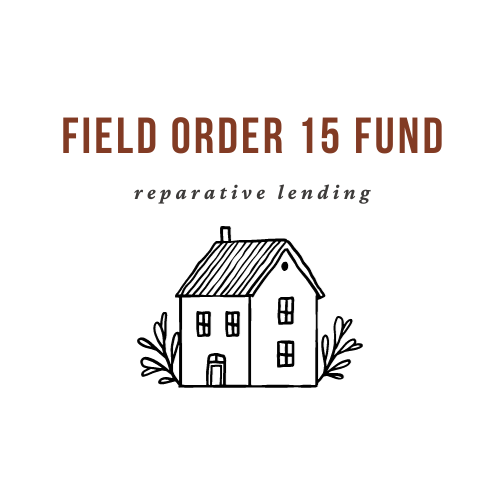
What do you know about Special Field Order 15? And how has it informed HomeSight’s new project, the Field Order 15 Fund?
A ‘Q&A’ with HomeSight’s Darryl Smith and Uche Okezie
In 1865, as the smoke from the Civil War cannons cleared, the leaders of the battered nation faced their next critical challenge: how would millions of newly freed Black Americans transition from a brutal and barbaric system of enslavement to participating in American life as free citizens?
General Sherman’s Special Field Order 15 addressed this challenge, offering a way forward that offered Black people a stake in the nation’s future. The order redistributed 400,000 acres of captured confederate land to the people who had been enslaved by Southern landowners. Each Black family would receive, in Sherman’s words, “40 acres and a mule.”
President Lincoln approved the orders, but after his assassination, Special Field Order 15, and its promise for equity and opportunity, would be reversed and buried beneath decades of explicitly racist laws that effectively and efficiently marginalized Black Americans. The country’s new leaders chose instead to carry forward the legacy of slavery, forcing generations of Black Americans to fight for every human right, and for every small piece of the American dream, in a system rigged against them.
This year, HomeSight and Black Home Initiative (BHI) revived the memory and intention of Special Field Order 15 by launching the Field Order 15 Fund. For Black History Month, Executive Director Darryl Smith and Real Estate Director Uche Okezie answered questions about the fund, its historical roots, and its anticipated impact for the future.
Why does the Field Order 15 Fund reference this moment in American history?
Darryl: We chose to reference Special Field Order 15 because we wanted this reparative lending program to fulfill this abandoned equity promise. The program provides upfront grant money, low-interest lending, and technical support for Black developers who are building affordable homes in the communities that need these resources most. We want to give Black developers a role and a voice in creating the much-needed housing for the community. We wanted the Field Order 15 Fund to ‘pick up the reins’ that had been dropped for so long, to start to fulfill Sherman’s order.
Uche: We’re taking a community-centric approach to increasing Black homeownership, giving Black builders a seat at the table and an opportunity to grow their businesses while breaking the barriers to Black homeownership, caused by this long history of unmet promises and racist barriers to affordable housing. That history started with the reversal of Special Field Order 15. There are so few BIPOC developers in our community who need and deserve an opportunity to create wealth. It helps them build their businesses, while helping to create wealth in their communities.
How does it work?
Uche: Field Order 15 provides low-interest lending and funding for Black developers, but it’s more than that. We looked at the pain points for developers: how they raised initial capital for feasibility; how they accessed low-interest, non-recourse lending. Then we used our own knowledge and experience to line up help with planning and resources. At HomeSight, we have decades of organizational experience building affordable homes, and we realized we could leverage this experience, as well as resources. We’ve seen how plans can change or city regulations can be challenging. All kinds of things can happen during a construction project. We want to set Black developers up for success to get them from ‘point A’ to construction financing. We developed the Field Order 15 Fund checklist system to help developers go step by step. It builds success into the process.
What are your goals for this project?
What issues are you hoping to address?
Darryl: We’re addressing a deeply rooted problem here, racial inequity, on several fronts. First, western Washington is experiencing a severe housing shortage, particularly affordable housing. Second, Black homeownership in Washington is staggeringly low. It’s worse today than it was in the days before the Fair Housing Act. We’ve not been doing a good enough job in the housing sector, or as a community, and we need to correct that. We hope the fund will help developers not just grow their businesses but produce up to 500 units of housing that will be available for community members to purchase, to begin their journey to generational wealth that can be passed down, and really help the community grow and prosper.
That’s really what this is all about because now, the disparity in homeownership for Black Washingtonians is about half of their White counterparts. That didn’t happen by accident. That happened on purpose because of redlining, because of racist covenants, and because opportunities for purchasing homes around the state have not been equally shared.
So we’re addressing both sides of the coin: working with Black developers to grow their businesses to produce the units that are needed, while at the same time getting folks on the path to homeownership with homebuyer education, down payment assistance, and closing cost help. If we can bring all that together, we will start to – start to – address the racial wealth divide here in Washington state. The idea of ’40 acres and a mule,’ is really about equal opportunity. It’s about creating equity.